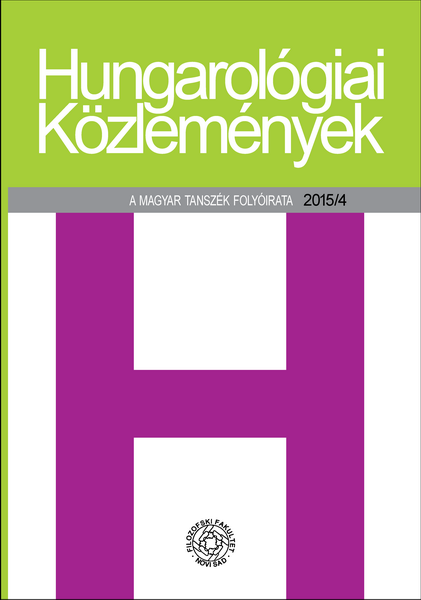Nyelvi változás, kreativitás és megértés
Language Change, Creativity, and Interpretation
Neologisms in present-day Hungarian
Author(s): Réka SólyomSubject(s): Lexis, Semantics, Finno-Ugrian studies
Published by: Филозофски факултет, Универзитет у Новом Саду
Keywords: language change; creativity; neologisms; functional-cognitive framework; conceptual integration
Summary/Abstract: The paper analyses in a functional-cognitive framework the process of language change and language creativity, and related to this, the attitudes of language users within a typical field of present-day use of Hungarian, that of neologisms. In order to clarify the notion of neologism (which sometimes raises problems, cf. Minya 2003, 13) the talk builds on the following definition: “a neologism is a linguistic phenomenon with a novel structure, which in a given situation is attributed a new meaning and/or a novel style compared to the speaker’s and/or the hearer’s previous (or expected) experience, knowledge and expectations. The process of ascribing meaning and style is dynamic, and may vary along a scale depending on the above mentioned features, even within a particular language user” (Sólyom 2014a, 19). The paper analyses neologisms in the sense of this definition, with several aims: to explore neologisms with various grammatical structure in the internet’s “written-spoken” (Bódi 1998, 186) language (e.g. neologisms with the prefix be: becéloz, bedrágul, etc.; verbs derived from nouns, e.g. facebookol, szelfizik, etc.; compounds, e.g. gerillakertész, kattintásvadász, etc.; neologisms created by back-formation, e.g. árfolyamrögzít, kamubejelent, etc.; conversions, e.g. csúcs, zsír, etc.) as well as to analyse the semantic-pragmatic features of some hapax legomena (nonce words) from contemporary Hungarian literature. A further aim of the paper is to present the strategies of interpretation, the processes of meaning construal and the attitudes which have been investigated by the author for the past 10 years (cf. Sólyom 2013, 2014a, b). In this research, informants of different age groups answered questions contained in a questionnaire about neologisms. Such a survey was conducted among university students (already working teachers) in the autumn of 2015; consequently, the paper can provide some new results about language users’ processes of interpreting neologisms.
Journal: Hungarológiai Közlemények
- Issue Year: 16/2015
- Issue No: 4
- Page Range: 65-83
- Page Count: 19
- Language: Hungarian

